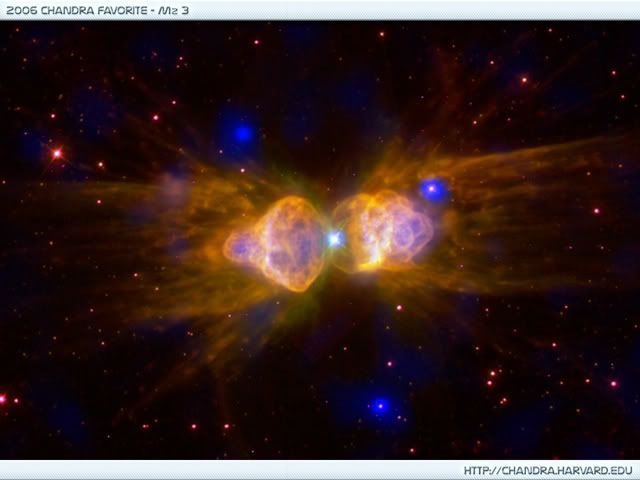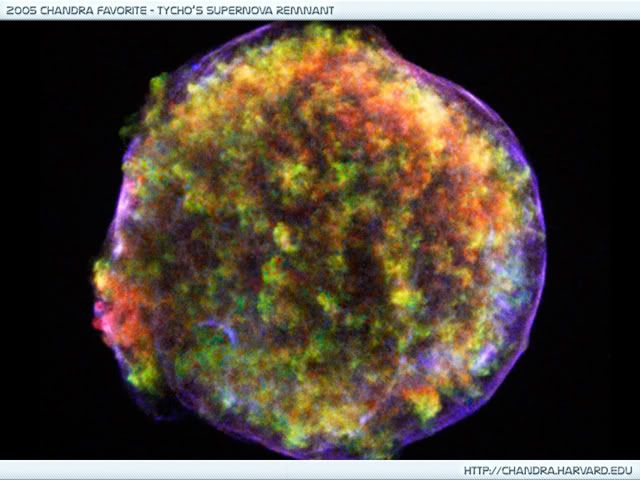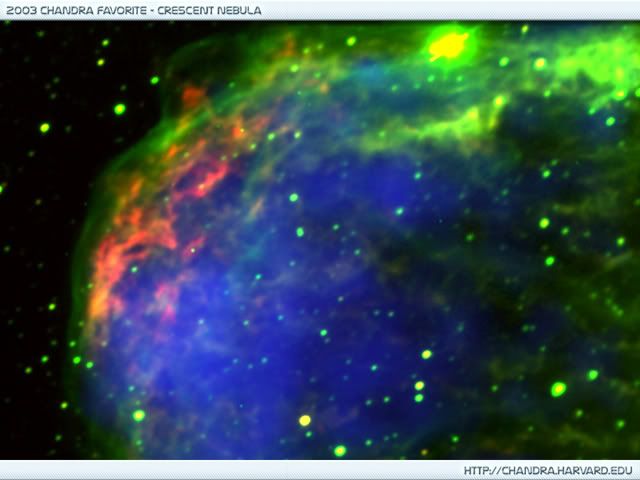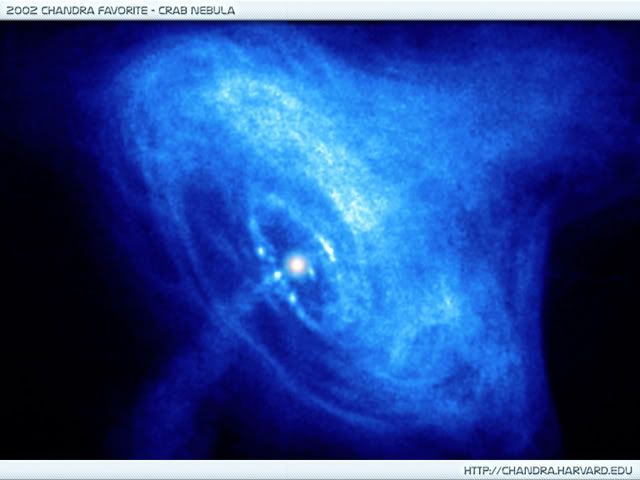Does Science Take Away Wonder and Awe?

What can science possibly give us to compete with the profound feelings that we experience when we contemplate the mysteries of god? Science is nothing but cold, hard facts, right? When we look at the dizzying volumes of erudite scribbling that astronomers and physicists spend most of their lives contemplating, it is easy to dismiss it. Poetry, art, and philosophy, after all, are the speculations and imaginings of people who are not constrained by cold hard facts. Is there anything that can compare with the wonder experienced when we contemplate a mystery?
In the paragraphs that follow, I will be recounting a chain of events, and hopefully some of my readers will experience the same kinds of feelings that I felt when I realized the poetic profundity of one simple act of science. Before I go further, I must confess that this essay would not exist were it not for Richard Dawkins' book, "Unweaving the Rainbow." Many of my facts are shamelessly borrowed from chapter 3 of this book, and I hope that should he ever become aware of this essay, he will regard my near-plagiaristic recounting as being in the same spirit of admiration that prompted Brahms to write his Second Symphony, which to many ears, is a blatant copy of the style and spirit of Beethoven.
In Genesis 9, Yahweh makes a pledge to Noah:
12And God said, This is the token of the covenant (solemn pledge) which I am making between Me and you and every living creature that is with you, for all future generations:
13I set My bow [rainbow] in the cloud, and it shall be a token or sign of a covenant or solemn pledge between Me and the earth.
14And it shall be that when I bring clouds over the earth and the bow [rainbow] is seen in the clouds,
15I will [earnestly] remember My covenant or solemn pledge which is between Me and you and every living creature of all flesh; and the waters will no more become a flood to destroy and make all flesh corrupt.
16When the bow [rainbow] is in the clouds and I look upon it, I will [earnestly] remember the everlasting covenant or pledge between God and every living creature of all flesh that is upon the earth.
17And God said to Noah, This [rainbow] is the token or sign of the covenant or solemn pledge which I have established between Me and all flesh upon the earth.
This pledge has been commemorated by Christians for two millenia as a sign of God's enduring love for us, and many devout believers have stood, transfixed by the beauty of the rainbow, in awe at the majesty of the creator of the universe. Is there anything that cold, hard science can do to compare with this?
In the 1670s, Isaac Newton experimented with light, trying to understand what it is, and how it behaves. He conducted many experiments, but the most famous was the one that led to the understanding that light is actually a conglomerate of colors, and what we perceive as white is actually far more complex. Before Newton, it was a commonly held belief that prisms added color to light. Pure light, it was believed, was white. Some property of a prism, then, must add color. The rainbow that you could see projected on your wall was therefore nothing more than a trick of the prism, adding beauty to the otherwise strictly functional white light. The mystery of the rainbow was that God actively performed this same miracle without the need of a prism, and placed it in the sky for all to see, proving that he was always watching, and always in control.
Newton devised a very clever experiment. He set up a prism in the same way that he always had, but this time, he included a filter, so that he blocked out all the colors except for red. This red light was passed through another prism. If it was true that prisms added color to light, then the light passing through the second filter ought to display a similar rainbow, even if the whole thing was tinted red by the tainting of the light entering it. Of course, the light from the second prism was unchanged. This proved that all of the colors of the rainbow are present in what we perceive as white light.
This discovery set off a maelstrom of dissent from poets and artists. Newton, it was said, had destroyed the sanctity of the rainbow by "unweaving" it and reducing it down to cold, hard science. The beauty of the rainbow is in the viewing, not the understanding, they said. Taking the mystery out of life, they believed, was the curse of science. Better to be ignorant and live in awe than to be informed and live in a tasteless world, devoid of true artistic or religious wonder.
Is this the reality of the situation? What have we gained from such a simple discovery? The answers may surprise you. In 1802, William Wollaston, an English Physicist, expanded on Newton's prism experiment with one of his own. Instead of letting light from the sun pass directly through the prism, he put a barrier with a very narrow slit in between the source and the prism. The results were very similar, with one notable difference. There were tiny bars of darkness in the resulting prism. They looked somewhat analogous to the barcode on produce at your local supermarket. The full significance of this result was not known to Wollaston, but as is always the case in science, his peers replicated the experiment, with similar results, and pondered the mystery, until one day, the German physicist Joseph von Fraunhofer measured and catalogued the barcode, answering the question of what the code actually means.
When light passes through a substance, some of the light is absorbed while the rest is allowed to pass through. Because of the unique atomic structure of each element, the specific wavelengths that are allowed to pass through are also unique to each element. This means that once we have isolated an element, passed light through it, and catalogued the resulting barcode, we can be certain that any time we see the barcode, we are looking at something which contains that element. This would be earth shattering enough as a discovery, but there is more. At high enough temperatures, individual elements begin to glow, giving off their own light, and producing the same barcode.
Here, we come to a question that has puzzled coffee shop philosophers for approximately as long as it has been fueling the ill-conceived arguments of quasi-nihilists who would use it to create enough empirical uncertainty so that god might slip through one of the cracks. How do we know that any two beings perceive light in the same way? How do we know that my blue is the same as your blue? Might it be that each and every human who has ever lived has perceived the world differently, such that we can never know for certain that anything is what we perceive it to be? To answer this question, we must briefly examine how it is that we perceive light at all.
Within each human eye are four types of light sensitive cells: Three kinds of cones, and another cell, known as a rod. Each of these cells perceives light in a slightly different way. All four types of cells have long stacks of membranes which in turn contain a protein called rhodopsin. Rhodopsin behaves like an enzyme, which means that it is a catalyst for a particular chemical reaction. To be more precise, each protein has an empty slot which is just waiting to be filled by a particular chemical. Additionally, rhodopsin is a type of "transistor" protein. In other words, it is like a switch. When it encounters the condition it is waiting for, it switches to "on." When the molecule is no longer present, it is in "off" mode. Where this comes in handy for humans, as well as all other animals who perceive light as we do, is that in rods and cones, rhodopsin acts as a light detector. When light hits the rhodopsin, it flips to "on." When the light is no longer present, it flips back to "off." This happens in each of the four types of light detecting cells, but each one is tuned to a slightly different frequency. Each of the three types of cones reacts proportionally more to red, green, and blue light, respectively. When blue light enters our eyes, the blue cones switch on at a much greater rate than the other two types, and our brains then reach the conclusion that we are seeing blue light. As you are probably well aware, very few of the images we see are of only one wavelength of light. Any time we are looking at a room, we are looking at thousands of different surfaces, each reflecting a slightly different set of wavelengths into our eyes. The combination of all three kinds of cones allows us to see incredibly fine differences in colors, which are actually complicated mixtures of many different wavelengths.
Cones have a limitation, though. They only respond to bright light. In order to see very dim light, we need the rods. Rods are found scattered all over the retina, and so are not very useful for fine detail. Furthermore, they don't react differently based on the color of the light -- only the intensity. Technically, rods are most sensitive to yellow. Curiously enough, we don't see in hues of yellow when we are in near darkness. This is because all of our perceptions of color are simply arbitrary representations of our brains' interpretations of the light. Here, then, is the mystery. How do we know that we see colors the same way? The answer, simply put, is that we don't. It is impossible for us to exchange brains with other humans to compare sensory perception, so the best we can do is observe the empirical realities and make our best guess. Does this mean that we can rightly say that people's perceptions actually are different? Unfortunately, no. We can quantify certain differences in perception, as with colorblind individuals, and we can demonstrate empirically that they are unable to perceive light the same way that we do, but again, we are limited to our observations of the results of these tests. We still cannot know whether your perception of red looks like my perception of green. We can, however, say with certainty that both of us do perceive light, and we do translate it into images, and that we can be certain that the light, and the images in our brains, do exist, and are consistent within the scope of functional empiricism.
What does all of this cold, hard science do for us? I promised to answer the question of awe and wonder, and I have not forgotten. Scientific awe is admittedly a bit more difficult to foster than religious awe, for an understanding of the science requires study and a certain amount of patience. To that end, I ask you to be patient with me a little longer.
When we look at the sky, we see stars, and for the most part, all of them appear to be nothing more than twinkling dots of varying brightness, all nestled in a dome far above our heads. Of course, we know now that they are actually intensely large balls of unimaginably hot gasses, heated by nuclear fusion to the point that they glow with blinding brightness, emitting light that travels over terrifyingly vast distances before it reaches our eyes, triggering the rods, and causing waves of chemical reactions. But, how do we know this? Remember Fraunhofer? His meticulous analysis of various elements and the cataloguing of the barcodes resulting from light passing through each one allows us to look at the sky with specialized equipment. We can pass the light from stars through a complex piece of machinery that will produce a set of barcodes from the light. When we compare these to the catalog, we can say with certainty what the stars happen to be made of.
There is another discovery that leads to even more startling truths. The Doppler effect, first verified with sound in 1845, and later confirmed with light, allows us to make amazing observations. Our perception of light changes as the source of the light moves either towards us or away. Since light moves so fast, this effect is only noticable to the human eye when the object is moving with staggering speed. More sensitive optical equipment, however, can detect changes that the human eye could never possibly see. When we look at a galaxy, the light is sometimes slightly more red or more blue than it ought to be. (How do we know what it "ought" to be? Simple! We analyze the light from the galaxy and see that the barcode is the same as that of our own galaxy.) Because we know how the Doppler Effect works, we can calculate that the galaxies are moving towards or away from us. By the degree of red shift, we can also calculate exactly how fast the galaxy is moving. Through multiple observations, and a very complicated version of simple triangulation, we can survey the entire sky and see just how large the universe actually is.
As most of those reading are probably aware, the results of these calculations have demonstrated that the universe is expanding from a single point. It is possible to calculate exactly where this point is, and how long ago the universe began expanding from this point. Without getting into the theories of how this expansion began, it is enough for this essay to point out that the conclusion is virtually irrefutable.
In the early 19th century, William Herschel stumbled onto an important discovery while examining the spectrum of visible light. He was trying to determine if each wavelength of light transferred the same amount of heat. He had separated light with a prism, and placed a sensitive thermometer in each color. Incidentally, he had an unsused thermometer set off to the side, past the red light. Much to his surprise, that thermometer registered a rise in heat! The inescapable conclusion was clear. There is light that is invisible to us. What Herschel discovered is what we call infrared light. This discovery led to another, and then another, until today, we understand that the visible spectrum of light is but a small fraction of what is now known as electromagnetic radiation. Without this simple observation, we would not have discovered radio waves or x-rays. Television would not exist. Magnetic resonance imaging (MRI) which allows us to see dynamic 3-D renderings of the organs within a living being, and which allow us to perform autopsies on centuries old mummies without damaging them, is a direct result of the accidental discovery two hunderd years ago!
Finally, I want to return to the rainbow. It is possible that by now, you have stopped to ponder the amazing and incalculable results of a simple experiment, centuries ago, where Newton, using the scientific method, discovered that light is actually multi-colored. It's possible that your mind has boggled, and that you have been left feeling awed by the overwhelming impact of such an unlikely event as that simple experiment. If you are still not impressed, I want to examine a rainbow, and show you how empty was the promise made by Yahweh, and how wonderful the reality of science can be in making us feel unbridled wonder.
As you are probably aware, a rainbow is actually the result of a prismatic effect created by light travelling through hundreds of thousands, or perhaps millions of individual raindrops. How does this actually happen, though? Can our perception be enhanced by knowing the science behind the rainbow? I will let the readers judge for themselves. Raindrops are more complicated than normal prisms. Because of the near-spherical shape of the drops, the effect is that of a convex lens. When light enters the raindrop, it is broken up into the individual colors of the rainbow. The back side of the drop (relative to the observer) has reflective properties, and so some of the light passes back through the raindrop, exiting out the front side at a different angle than it entered. To the observer, only a small portion of the light is now visible. Each of the other colors has been reflected out in such a way that it passes over or under us, as if it doesn't even exist.
Raindrops at different altitudes go through exactly the same process, but the angle of light that we perceive is slightly different. Since the raindrops are covering the entire sky, as far as our perception goes, we see all of the colors of the visible spectrum, each transmitted by a different band of raindrops at a slightly different altitude. Of course, the raindrops themselves are falling, so each passes only briefly through the area which transmits visible light to us. What we are actually seeing is the result of a cascade effect of thousands of raindrops, each passing briefly through our vision, while much of the air we are looking at is actually devoid of raindrops. This produces the shimmery effect we are all familiar with.
Now, why is the rainbow curved? Simply put, we are the center of a circle. The only light we see is that which is coming in at exactly the right angle to reach a single point at the back of our eyeball. You can imagine thousands of individual rays, all radiating outward at every angle of a circle. The band of light that we are seeing as a rainbow takes on the outline of a circle, which is actually the result of our perception, not the reality of the light, which is actually travelling through all points of the atmosphere equally, creating prisms relative to anyone who may be observing, and unique to each individual observer. Let me put that in simple terms. When you see a rainbow, you are the only person on the planet who is seeing that rainbow. Everyone else is seeing their own, slightly different rainbow, in a slightly different position in the sky! In fact, the rainbow doesn't actually exist, except in your perception. If you were not standing exactly where you were, looking at exactly the angle you were looking, then for all practical purposes, there was no rainbow!
One last observation that may surprise you. The rainbow is not in the sky. It is not distant, even though it appears so. You can demonstrate this for yourself by staring at a light bulb a couple of feet in front of you until the image is "burned" onto your eye, and then staring at the sky. The light bulb image that remains will seem to be enormous, filling a great portion of the sky. The rainbow, like the false light bulb image, exists only in your perception, and is entirely inside your brain.
What's more, as we discussed earlier, we cannot know for certain that your perception is not unique to you. What you see when you look at the rainbow can be objectively called red, orange, yellow, green, blue, indigo, and violet, but for all anyone knows, you may be perceiving the rainbow in a way that no one who has ever lived has perceived it before. Now, I want you to think with me for a moment. Recall Yahweh's promise. First, the flood did not happen. I will not devote space to debunking this myth, as it is not the purpose of this essay, but there are plenty of resources available for those who wish to learn. Second, many parts of the world have been destroyed by catastrophic flooding. One need look no further than the tsunami which recently took the lives of so many thousands of people. The promise of Yahweh is empty. The knowledge of science, however, is as eternal as anything that man will achieve. You can know with certainty that the rainbow you are seeing is unique to you -- not because of a myth, but because of the cold, hard facts that so many philosophers and poets have eschewed.
Now, I have several photos that I want you to look at. Are they any less inspiring than a rainbow? Perhaps they are even more wonderful. These are images from the Chandra telescope, which detects not visible light, but x-ray radiation. Without Newton's simple discovery, you would not be able to witness these images of events that happend millions, even billions of years ago, so far away that it almost defies human comprehension. Is science really all that cold, or is some of this impressive enough to awe the intellects of mere humans?
*******




Atheism isn't a lot like religion at all. Unless by "religion" you mean "not religion". --Ciarin
- Login to post comments

I love the images from things like Hubble and Chandra. But the images you sowed are all false color images as we cannot directly perceive x-rays. What is intersting to me is that false coloring could take any arbitrary form, but astronomers have used schemes that create aesthetically pleasing images. Is this science or art? There is no scientific need to translate x-ray data into visually pleasing images. But it sure is cool.
My Artwork
Does Science take away wonder and awe? Hell no, in fact it adds to it.
Xians say all the answers we need are in the Bible, while at the same time science takes away the mysteries of life. How contradictory is that?
Scientific discovery provides "profound" experiences equal to religious experiences. New explanations and discoveries add new mysteries. Lingering doubts are not to be shunned, they are to be encouraged.
It saddens me how many people dont get that.
Are the profound experiences of science as accessible to the average person? I've been blowan away by scientific discoveries many times. But explaining to somebody that helium at just above absolute zero becomes a frictionless fluid that does REALLY WEIRD stuff is a lost cause.
My Artwork
Perhaps you didn't get what I was saying. Naysayers always say that science can't equate with art and poetry -- that science takes the mystery and wonder away from people.
This, if you ask me, is science and art, and it's amazing.
That's the point. Without science, we'd have never had the chance to see the art.
'cause scientists like art, too.
Atheism isn't a lot like religion at all. Unless by "religion" you mean "not religion". --Ciarin
http://hambydammit.wordpress.com/
Books about atheism
You should read a little more carefully. I've already answered all of your questions in the OP. Thanks for reading and commenting, though!
I would point out that poetry is not really all that accessible to the average person, either -- at least once you get out of the hallmark section.
Ever notice that it takes a certain amount of training to appreciate Stravinsky, or John Cage?
Could you really hope to get everything out of an art exhibit without knowing something about art, the artist, the subjects of the works?
The point is, knowledge enhances one's ability to experience profundity, not the other way around.
More, and deeper profundity is available to those who eschew ignorance.
Atheism isn't a lot like religion at all. Unless by "religion" you mean "not religion". --Ciarin
http://hambydammit.wordpress.com/
Books about atheism
See sig:
The most beautiful experience we can have is the mysterious.... Whosoever does not know it and can no longer wonder, no longer marvel, is as good as dead, and his eyes are dimmed ~Albert Einstein
One of his best quotes, if you ask me.
There are times, most recently from Dawkin's books, when I'm reading, and I almost have to put the book down because I can't stand the euphoria in my brain, but I don't want it to stop.
If you haven't read Unweaving the Rainbow, you really should. Chapter three, on which this essay was shamelessly based, had me in a tizzy for hours after my first reading.
Atheism isn't a lot like religion at all. Unless by "religion" you mean "not religion". --Ciarin
http://hambydammit.wordpress.com/
Books about atheism
Why? I learn all this in my university classes, why would I want to read about it again?
I have no idea why you would want to. I get geeked out by science the same way that I get geeked out listening to Beethoven. Sorry that I enjoy good writing, even if it's about stuff I already know. I've played some of Beethoven's sonatas 200 times, and they are still thrilling. The funny thing is, even after 200 times, I still discover something I've missed, or find a new way of thinking about it.
I guess if you've been to university, you know all there is to know. How boring it must be for you.
Did you wake up on the wrong side of the bed? Awfully pissy considering I was agreeing with you.
Atheism isn't a lot like religion at all. Unless by "religion" you mean "not religion". --Ciarin
http://hambydammit.wordpress.com/
Books about atheism
I'm not being 'pissy'.
The point is, I find my own meaning behind the stuff I learn.
Oh and I do read science books (I have a long reading list). But once again, I find my own meaning behind them.
Truly amazing. You've actually missed my point when I was agreeing with you.
Are you like this in person? I mean, do you find the most negative way to look at everything everyone around you says?
So that you don't miss my point, let me be overly precise. I'm not trying to insult you. I'm asking you a neutral question. My observation is that in almost all of my posts that you respond to, you misinterpret something I'm saying, and pretty much always in a negative way. I've seen you do this with many other posters, too, and it seems to be consistent.
I mean, we're not arguing about god here. You and I agree that science is thrilling, right?
I simply posted something that thrilled me, and suggested that you might enjoy it. Your response? "Why would I want to do that? I know all that shit already."
My words:
What is it in these words that made you feel like you needed to poop on my parade? Did you want to feel superior by pointing out that you know all about light already? You don't have to answer me. I have no desire to be your shrink, and I'm certain you wouldn't choose me if you wanted one.
Sorry I tried to have a nice, agreeable conversation with you. I didn't realize we have to act like enemies all the time because we disagree about multiverses and infinite consciousness.
Atheism isn't a lot like religion at all. Unless by "religion" you mean "not religion". --Ciarin
http://hambydammit.wordpress.com/
Books about atheism
I just want to say, I hate the false color pictures.
Awful schemes, that's why these guys are scientists, and not fashion designers or home makers.
Dude, relax.
My comment was smartass anyway.
See, you suggested I read up on it (The Dawkins book) and it mentions light, (you were talking about Dawkin's book, not light.). And I said I took that in class (The light, not Dawkin's book.)
as in a smartass response?
u c wat i did thar?
eh? eh?
bah.....
I definitely don't think science takes away wonder or awe necessarily. In fact, I'm in line with many Renaissance era scientists who believe that it gives us a better understanding of Creation and God's majesty. My sentiment, even with our fundamental disagreements, is clearly reciprocated. Science can be a gift. I tihnk some of the positivst and atomistic trends, however, can take away from wonder and awe. As do creationists and fundies.
Thanks for the comment! Clearly we disagree on the origin of existence, but there's no doubt that the study of existence is its own reward.
Atheism isn't a lot like religion at all. Unless by "religion" you mean "not religion". --Ciarin
http://hambydammit.wordpress.com/
Books about atheism
But in all seriousness. (Yes I am serious......for now.)
This reminds me of a topic I made a while back
http://www.rationalresponders.com/forum/sapient/atheist_vs_theist/8001
Oh, and I like Penguins in funny hats.